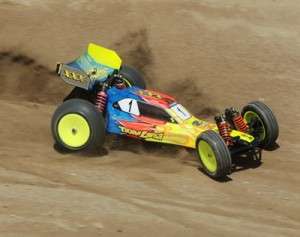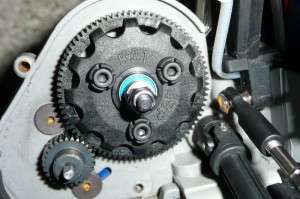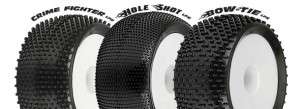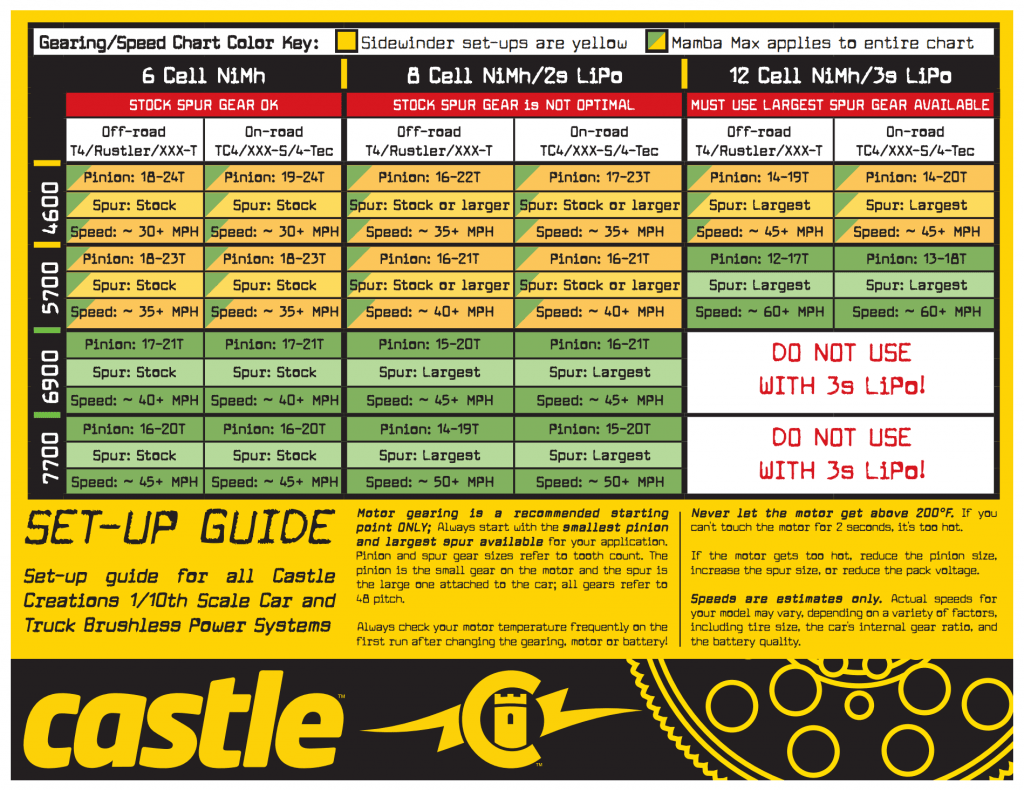Street Bashing and Drag Racing Edition
The original guide written in July 2012 and updated in 2020.
- Introduction
- 1. Change the Gear Ratio
- 2. Use the right Tires
- 3. Reduce (or adjust) the weight
- 4. Upgrade the battery
- 5. Upgrade the Motor and ESC
- 6. Use a more aerodynamic body shell
Introduction
Welcome to my simple guide on making your Radio Control Car faster. Read on to learn some great tips that will help you get the most out of this amazing hobby.
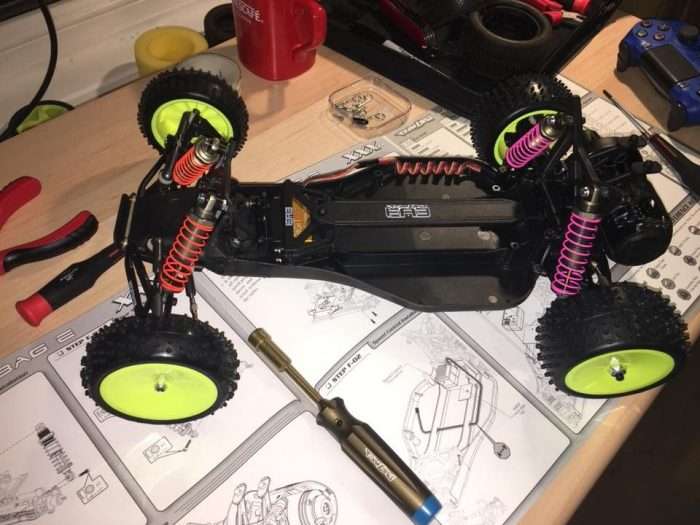
One of the most enjoyable things about the RC Car hobby, whether at the track or just street bashing, is tuning to make your RC car even faster.
There are many ways this can be done; some are easy and some are more technical, and the cost can vary from the price of a cup of coffee, to more than the car cost new.
These tips are aimed more at street bashing or drag racing; Track racing requires a different approach to racing in a straight line or on the street. Track racing is all about quicker overall lap times where a slower car can actually be faster ( sound crazy? Don’t worry, guide coming soon ).
In no particular order, the following tips should help you increase the speed of your car so you can leave your RC pals in the dust!
1. Change the Gear Ratio
Changing the gear ratio is a quick and easy way to alter your car’s performance, making its top speed or acceleration faster. You’ll be really surprised at how different the car can feel when changing gear ratios.
Simply change the pinion (the small metal gear on the motor) or the spur gear (the large plastic gear) for a different size. Change both of them for maximum effect. Check the note below on Gear Mesh.
For a higher top speed go for a larger pinion gear (with more teeth) and a smaller spur gear (with less teeth). The trade-off here is that you will gain a higher top speed at the expense of slower acceleration and a higher motor/esc temperature.
This configuration is ideal for long straight runs and large areas with few corners.
For quicker acceleration go for a smaller pinion gear (with less teeth) and a larger spur gear (with more teeth). Your car will accelerate off the mark very quickly with more torque, and you’ll also benefit from cooler running temperatures which can extend the life of your motor and esc. The trade-off is a slower top speed.
This configuration is ideal for smaller spaces where you wouldn’t have the room for a long speed run, or where there are many corners or obstacles to race around.
Warning: Remember not to gear too high; the extra strain on the motor will generate a lot more heat, and your ESC or motor may even cut out – especially if you are using the car off road. The manual with your RC car should give you some recommended gear ratios and pinion sizes. If your motor is excessively hot after a run, then you might need to go down in gear a little. Experiment to get the balance just right.
IMPORTANT! Gear Mesh: When changing either gear you will need to adjust the motor position so that you retain the correct gear mesh (space between gears that allows free and smooth movement). You don’t want the gears locked together too tightly causing excess friction; this will slow the car down, create extra noise, put lots of strain on the power system and run the battery down very quickly. You also don’t want the gears too loose; this will cause them to slip and you’ll wear out or damage your spur gear very quickly. I find the best way to set the gear mesh is to fit the pinion and spur tightly together, and then back the motor position off a little until you can hear a bit of ‘play’ when you rock the spur gear back and forth.
2. Use the right Tires for the surface you are racing on
Using the right tires for the surface you are driving on will give the car more grip so you can make the most of the power available to you. This will help you get moving that bit quicker. Tires are very important; you won’t be going anywhere fast with no traction!
Slicks grip well on dry tarmac and road surfaces, full spikes work well on grass and wet mud, mini pins work well on carpet and astroturf surfaces, and mini spikes are a good all rounder.
The compound of the tyre will also need to be considered. Different compounds such as Schumacher’s Yellow, Green or Blue can be used. Softer tyres are good in low grip (loose dirt) and wet conditions, medium compound is good for dry conditions and hard compound is ideal for very hot weather or long life.
There are many other different types of tyres out there, but that subject needs an article of its own which is coming soon.
3. Reduce the weight of your car
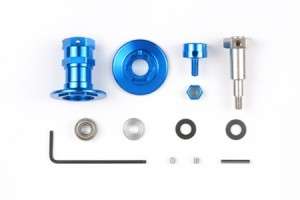
Reducing the weight of an RC car can certainly speed it up. You can do this by replacing heavy parts with light carbon, graphite or aluminium parts, lightweight wheels and body.
If you run Ni-Mh or Ni-Cad battery packs, swapping over to Li-Po batteries is a great way to drastically reduce the weight of your car (Li-Po batteries also pack more of a punch; ideal for a high-end Motor/Esc combo.
The only downside to reducing the weight of your car is loss of traction. Less weight means the tyres aren’t pushing against the ground as hard, so you’ll find the car may not corner as well. If your goal is to achieve the fastest top speed possible then this won’t be a problem, although you may need to add a little weight to the front of the car to keep it from flipping over at high speeds!
4. Upgrade your Battery
Replacing an old tired battery with new can certainly improve things. If you are using older Ni-Mh or Ni-Cad type batteries, upgrading to the modern Li-Po type can make a huge difference to performance, especially if you are using a decent brushless motor and ESC combination.
5. Upgrade your Motor and ESC
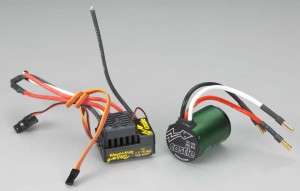
Most ready-to-run (RTR) electric radio controlled cars bought in the shops are fitted with budget brushed or brushless motor systems to keep the price down. This is fine to get you started, but if you really want to push your car to its limits, upgrading your Motor and ESC (electronic speed controller) to a high performance system is a great way to do it.
By using a high performance brushless motor and ESC you can expect to see some pretty amazing speeds out of your RC car, with the added bonus of improved efficiency and longer run times that brushless technology has to offer. The motor and ESC you choose will depend on how fast you want to go, and the amount of money you want to spend.
High end motor and ESC combos such as Mamba Max or Novak GTB can be very expensive, often costing a lot more than the original car itself. If you don’t want to spend too much, cheaper Chinese systems such as Hobbyking or Turnigy are available and perform really well for the money.
About Brushless and Batteries…
If you are running an extremely powerful Motor and ESC system, old style Ni-Mh or Ni-Cad batteries aren’t going to give you the power needed to run them to their full potential.
When I first upgraded to a brushless system, I was still using Ni-Mh batteries. Other than a longer run time, I didn’t see any noticeable improvement in performance between a 6.5t brushless motor and my old 13t brushed quad – that was until I bought my first Li-Po battery – I was shocked at the difference! Even while using the old brushed motor, the car had much more punch and top end.
For this reason, Li-Po batteries are highly recommended. Just remember to take care when using, charging and storing them. I have seen, first hand, a Li-po burst into flames when it was connected to the car the wrong way around.
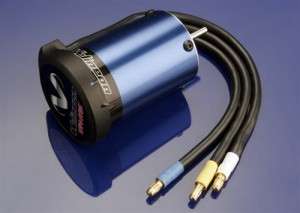
What brushless motor system should you choose?
Brushless motors are usually rated by the number of turns (4.5t, 6.5t etc) or Kv (4600kv, 6900kv and so on) – I’ll explain more about that later, but for now, in a nutshell, the lower the turns, or the higher the kv, the faster the motor.
For 1/10th scale on-road use, the current fastest motor is around 3.5 turns (at time of writing this article – July 2012) which is somewhere around 9000-10,000kv depending on the manufacturer. For off-road use you would need a slower motor with more torque; the extra amount of effort to move along on rough ground or grass is going to generate more heat and put more strain on the motor. The motor / ESC will end up overheating and cutting out, or worse case you may cause some damage.
Some example configurations for 1/10th RC Cars from Castle Creations
The leaflet shown below from Castle Creations gives you some examples of the speeds you can expect from their products.
Note that the fastest possible combination on this sheet shows a slower Kv (5700 or 4600) motor with a 3s 11.1v Lipo pack or a 12cell Ni-mh battery pack. The 7700 or 6900 motor would be the faster option if you were limited to 2s Li-pos or standard 6 cell battery packs.
6. Use a more aerodynamic body shell
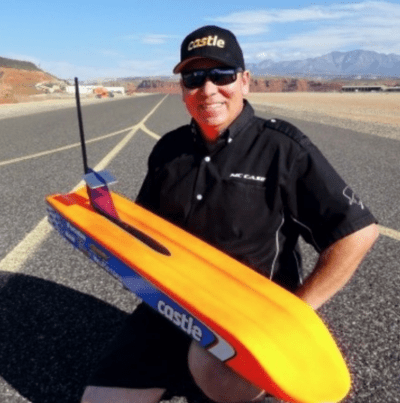
Using a more aerodynamic body shell can help your car achieve a higher top speed. A large, bulky truck or car shell is always going to create more drag, so using a sleek, aerodynamic shell with less wind resistance is what you need if you are hoping to go faster.
You’re probably not going to notice much of an improvement unless doing speed runs with a speed gun, but it would make a small difference – and if you are trying to beat a previous high speed record, every bit helps.
Hopefully this guide has given you some great ideas on how you can make your RC car go much faster, so have fun experimenting!

